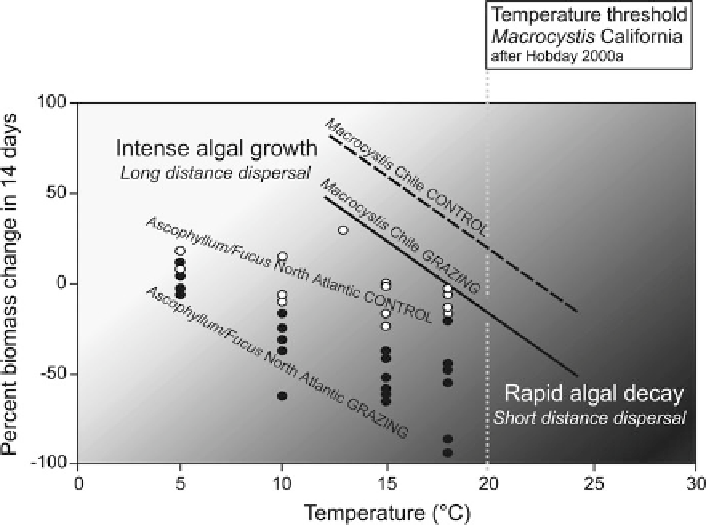Biology Reference
In-Depth Information
Fig. 17.8
Conceptual model of the influence of the combined effects of temperature and grazing
(CONTROL versus GRAZING) on percent biomass change of floating algae during 14 days; data
for
Ascophyllum nodosum
and
Fucus vesiculosus
were taken from Vandendriessche et al. (
2007a
),
and data for
Macrocystis pyrifera
from Rothausler et al. (
2009
)
allocation of N to the synthesis of other compounds) and algal growth at mid latitudes
(Roth
ausler et al.
2009
,
2011b
), while under moderate grazing pressure algae could
compensate tissue loss by enhanced growth (Cerda et al.
2009
). Grazing by isopods
also provoked fast sinking of
A. nodosum
and
F. vesiculosus
butitseemedthatthe
destructive effects of the grazers depended on water temperature and the availability
of alternative food resources (Gutow
2003
; Vandendriessche et al.
2007a
). The
negative effect of isopod grazing on the floating potential of the algae was enhanced
by high water temperatures, which resulted in a reduced persistence of the brown
algae at the sea surface (Vandendriessche et al.
2007a
). Contrarily, in cooler waters
(
€
15
C) grazing seemed to play only a minor role for the survival of floating algae
because they can compensate grazer-induced tissue losses via growth
(Vandendriessche et al.
2007a
; Rothausler et al.
2009
)(Fig.
17.8
). This might also
explain why Ing
´
lfsson (
1998
) observed no signs of decay in
A. nodosum
after
>
<
40 days of floating in cold Icelandic waters.

